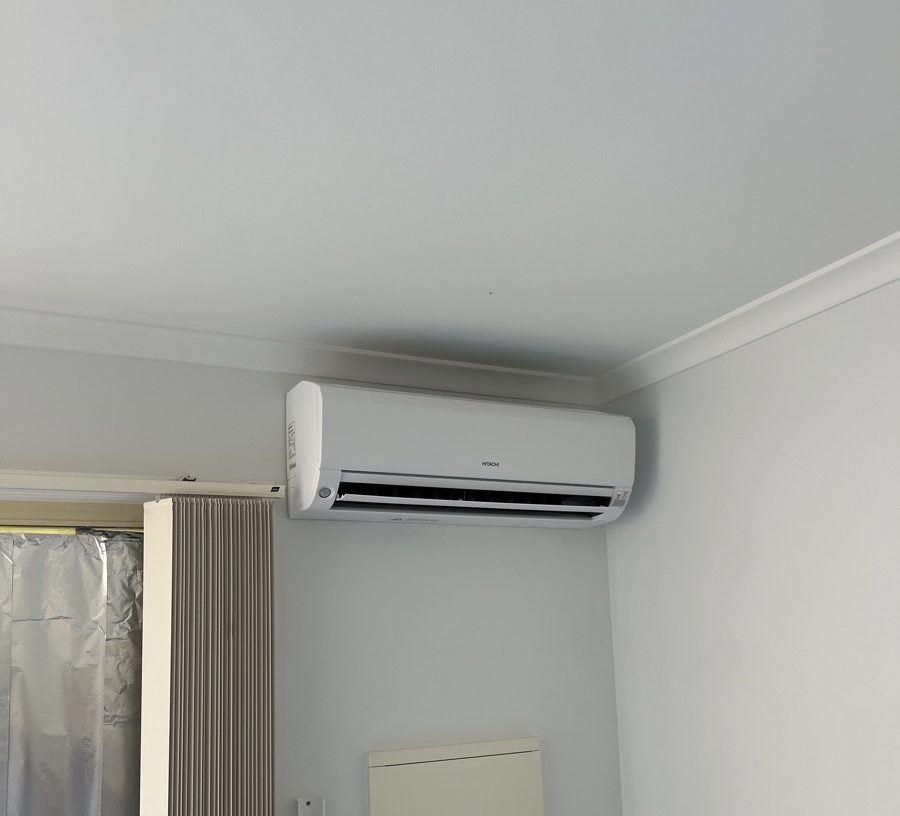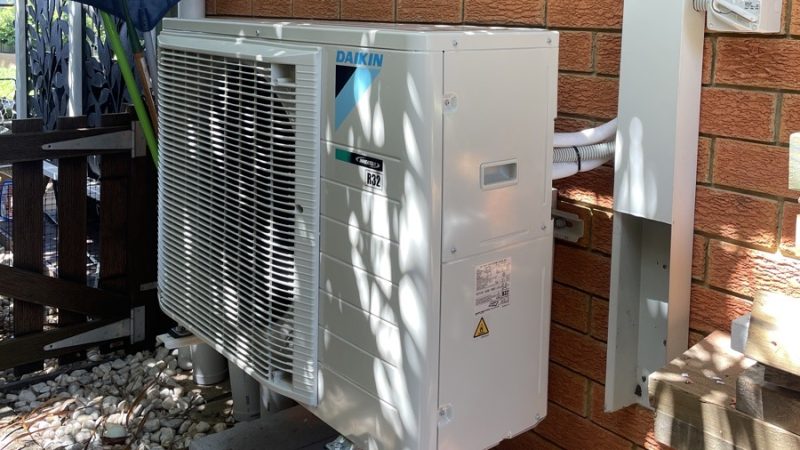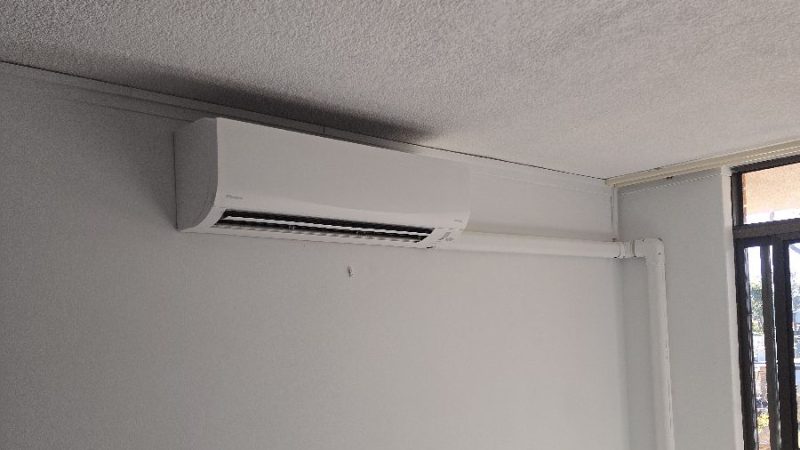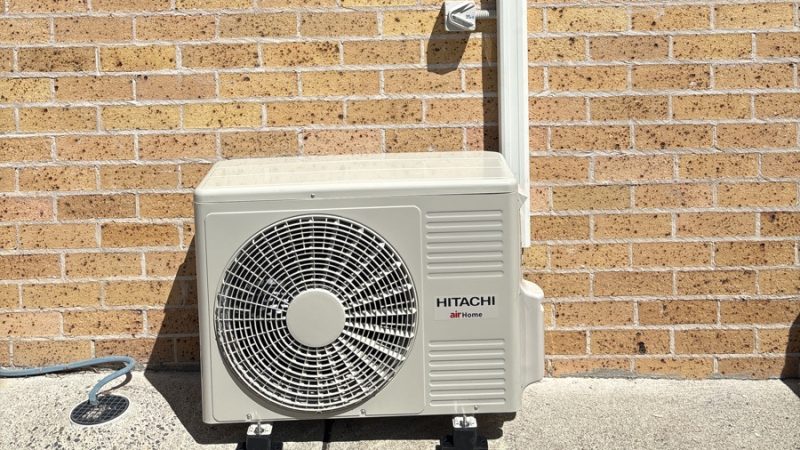Articles / Air Conditioning
The Ultimate Guide to Split Air Conditioning Installation in Underwood
23 December 2024

Installing a split air conditioning system in Underwood is a process we’ve mastered. It’s all about understanding the system’s energy efficiency and low noise benefits, assessing your home’s specific needs for capacity and unit placement, and choosing a model that matches those needs. Preparing your home for installation includes checking your electrical system and making sure the site is clear. Then the installation process involves properly connecting everything and avoiding common mistakes.
Keeping up with maintenance post-installation is also crucial. Stick with us for a deeper understanding of the entire process and how to ensure your home stays cool and comfortable.
Key Takeaways
– Understand the benefits and operation of split air conditioning systems, renowned for their energy efficiency and low noise levels.
– Evaluate your home’s needs in Underwood, considering factors like size, layout, and climate to determine the capacity and placement of the units.
– Choose the right model based on energy efficiency, size, noise levels, cost-effectiveness, and specific home needs.
– Prepare for the installation by conducting a pre-installation checklist, inspecting locations for sturdiness and drainage, and assessing the home’s electrical system.
– Follow a step-by-step installation process, ensuring that both indoor and outdoor units are properly installed and connected.
Understanding Split Air Conditioning Systems
Let’s delve into the heart of split air conditioning systems, a cooling innovation that’s been transforming comfort in homes across Underwood. These systems are renowned for their energy efficiency, a characteristic we’re all eager to capitalize on in these environmentally-conscious times. They operate by dividing the hot from the cold, effectively reducing the energy expended in cooling your home. This translates to lower electricity bills, making split air conditioning systems a cost-effective choice.
Moreover, split air conditioning systems are loved for their low noise levels. Unlike traditional air conditioning units that can be quite loud, split systems are whisper-quiet. You’ll hardly notice they’re running, allowing you to enjoy a peaceful, cool environment.
In terms of aesthetics, these units score high points. They’re sleek, and modern, and come in a variety of designs to seamlessly blend into your home decor. They don’t require any ductwork, which means no unsightly vents disrupting your interior design.
Evaluating Your Home’s Needs
Before diving into the installation process, it’s crucial to assess your home’s specific cooling needs to ensure the split air conditioning system will be efficient and effective. This involves two main steps: assessing capacity and determining placement.
When we talk of assessing capacity, we’re referring to the amount of cooling your home needs. This depends on a variety of factors such as the size and layout of your home, the number of occupants, and the local climate. It’s not a one-size-fits-all situation. Larger homes or those in hotter climates will require a system with a higher capacity. We’ll help you calculate this to ensure your new system can handle the demands of your home.
Determining placement, on the other hand, involves deciding where the indoor and outdoor units of your split system will be installed. The indoor units should be placed in areas that need cooling the most, like living rooms or bedrooms. The outdoor units, meanwhile, should be situated in an area with good ventilation and away from obstructions.
Choosing the Right Model
Navigating through the multitude of split air conditioning models can seem daunting, but we’re here to guide you in making an informed decision that best suits your home’s needs.
The first key point to consider is energy efficiency. An energy-efficient model won’t only reduce your carbon footprint but also save you money in the long run due to its cost-effectiveness. Look for models with a high Seasonal Energy Efficiency Ratio (SEER) rating, as they consume less power for the same cooling effect.
Next, consider the size of the air conditioner. It’s crucial to choose a model that’s the right size for your space. A unit that’s too small won’t cool your room adequately, while one that’s too large will consume more energy than necessary.
Lastly, take into account noise levels. A quiet model will ensure that your home remains a peaceful haven, even in the height of summer.
Preparing for Installation
Once you’ve selected the perfect model, it’s time to prepare your home for the split air conditioning installation. This involves a pre-installation checklist to ensure everything is in order and ready for the installation day. It’s not just about setting aside the space for the unit but also checking if your home’s electrical system can handle the new addition.
The pre-installation checklist includes inspecting the location where the indoor and outdoor units will be installed. We’ll need to ensure the wall is sturdy enough to hold the indoor unit, and the outdoor unit should be placed in a shaded area, preferably. It’s also crucial to consider the drainage system for the outdoor unit.
Next, we’ll assess your home’s electrical system. If it lacks the necessary capacity, you may need to upgrade it prior to the installation.
Lastly, clearing the area around the installation site from any obstacles and ensuring clear access for the installers forms a part of the checklist.
The installation timeline typically depends on the complexity of the installation. However, with good preparation, we can ensure a smoother, faster process. Remember, good preparation is key to a successful installation.
Step-by-Step Installation Process
Now that we’re fully prepped, let’s dive into the step-by-step installation process of your new split air conditioning unit.
First, we’ll need the right installation tools. These include a drill, a level, a tape measure, and a screwdriver. It’s important to use the right techniques with these tools to ensure a successful installation.
Start by mounting the indoor unit. Measure and mark the spot on the wall where the unit will go, ensuring it’s level. Then, drill the holes for mounting. Avoid common installation mistakes such as not properly securing the unit—it should be firmly attached to the wall.
Next, install the outdoor unit. Choose a spot that’s away from direct sunlight and rain. Use the level to ensure it’s positioned correctly. Drill holes for mounting, and then secure the unit.
Once both units are installed, it’s time to connect them. Run the refrigerant lines, condensate drain, and electrical wires through the hole you drilled in the wall. Connect the lines and wires, making sure to avoid another common mistake—crossing or twisting them.
Post-Installation Maintenance Tips
After getting your split air conditioning unit up and running, it’s crucial to follow some maintenance tips for long-lasting performance.
Firstly, cleaning filters is a task we can’t overstate. It’s not only simple to do, but it’s also one of the most effective ways to keep your system running smoothly. Dust and debris can quickly accumulate in the filters, restricting airflow and reducing the unit’s efficiency. So, we recommend cleaning the filters every month during peak usage times.
Another important routine to keep up with is checking the refrigerant levels. If the refrigerant is too low, your unit may not cool properly, and if it’s too high, it might become less efficient and even risk damage to the compressor. Therefore, it’s necessary to check these levels regularly.
If the refrigerant needs topping up, it’s best to call a professional as it involves handling chemicals.
Frequently Asked Questions
What Are the Typical Costs Associated With Running a Split Air Conditioning System?
We’ve found that the typical costs of running a split air conditioning system can vary. It largely depends on factors like its energy efficiency and usage.
However, a basic cost breakdown might include the initial purchase, installation, and ongoing energy bills.
Don’t forget routine maintenance as well, which is crucial for keeping the system running optimally.
We can’t provide precise numbers without more specifics, but these are the main costs to consider.
How Long Does a Split Air Conditioning System Usually Last?
We’ve found that the life expectancy of a split air conditioning system typically ranges from 10 to 15 years. Of course, this can vary depending on factors such as usage and maintenance.
Regular upkeep is crucial. We’d suggest routine cleanings, yearly inspections, and immediate attention to any issues. Following these maintenance tips won’t only prolong your system’s lifespan, but also ensure it runs efficiently, saving you money in the long run.
Can I Install a Split Air Conditioning System Myself or Do I Need a Professional?
While it’s possible to install a split air conditioning system yourself, we’d advise against it. It’s a complex job with potential safety risks. There’s also the risk of damaging the unit, which could void your warranty.
The pros of professional installation far outweigh the cons. They’ll take all necessary precautions to ensure a safe and effective install. So, we’d recommend hiring a professional with a DIY approach.
What Are the Environmental Impacts of Using a Split Air Conditioning System?
We’re aware that split air conditioning systems can have environmental impacts. These systems can be energy efficient, reducing our carbon footprint. However, improper use can lead to increased energy consumption.
Also, while they improve indoor air quality, improper maintenance can cause health concerns. So, it’s vital we use and maintain these systems responsibly to minimize negative effects on our environment and health.
Are There Any Specific Building Codes or Regulations I Should Be Aware of Before Installation?
Yes, there are specific building codes and regulations you should be aware of. We can’t stress enough how important it is to check local building permissions and installation restrictions before starting.
Regulations vary widely from place to place, so it’s best to consult with your local authority. Compliance isn’t just about legality; it’s also about ensuring the safety and efficiency of your air conditioning system.
We’re here to help if you’ve got questions.
Conclusion
We’ve walked you through the ropes of split air conditioning installation in Underwood, from understanding the system to post-installation maintenance.
Remember, it’s crucial to evaluate your home’s needs, choose the right model, and prepare for the installation process.
Once it’s done, keep up with maintenance to ensure longevity.
We hope this guide has made the process easier for you. Don’t hesitate to seek professional help if you’re unsure at any step.
Happy cooling!



